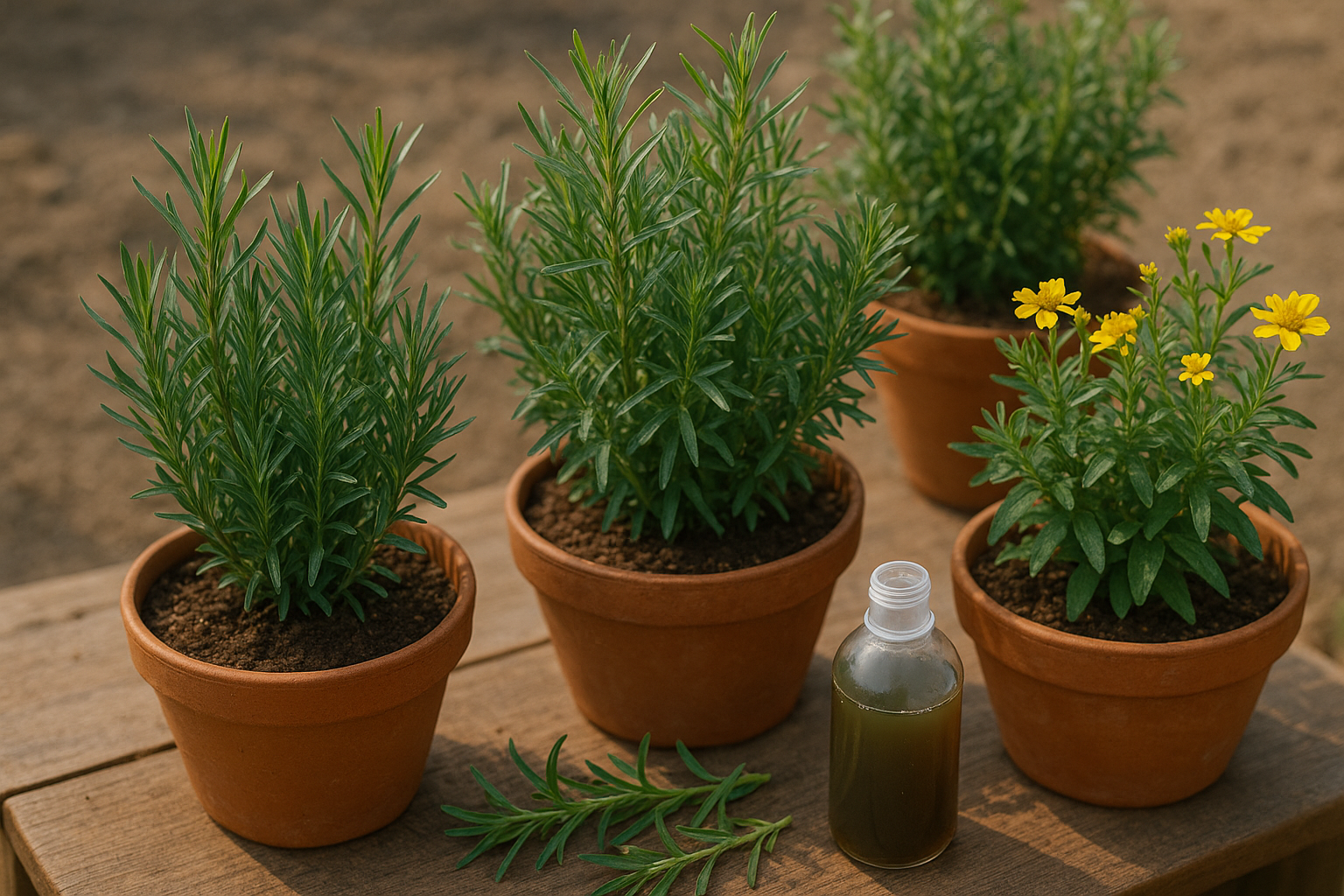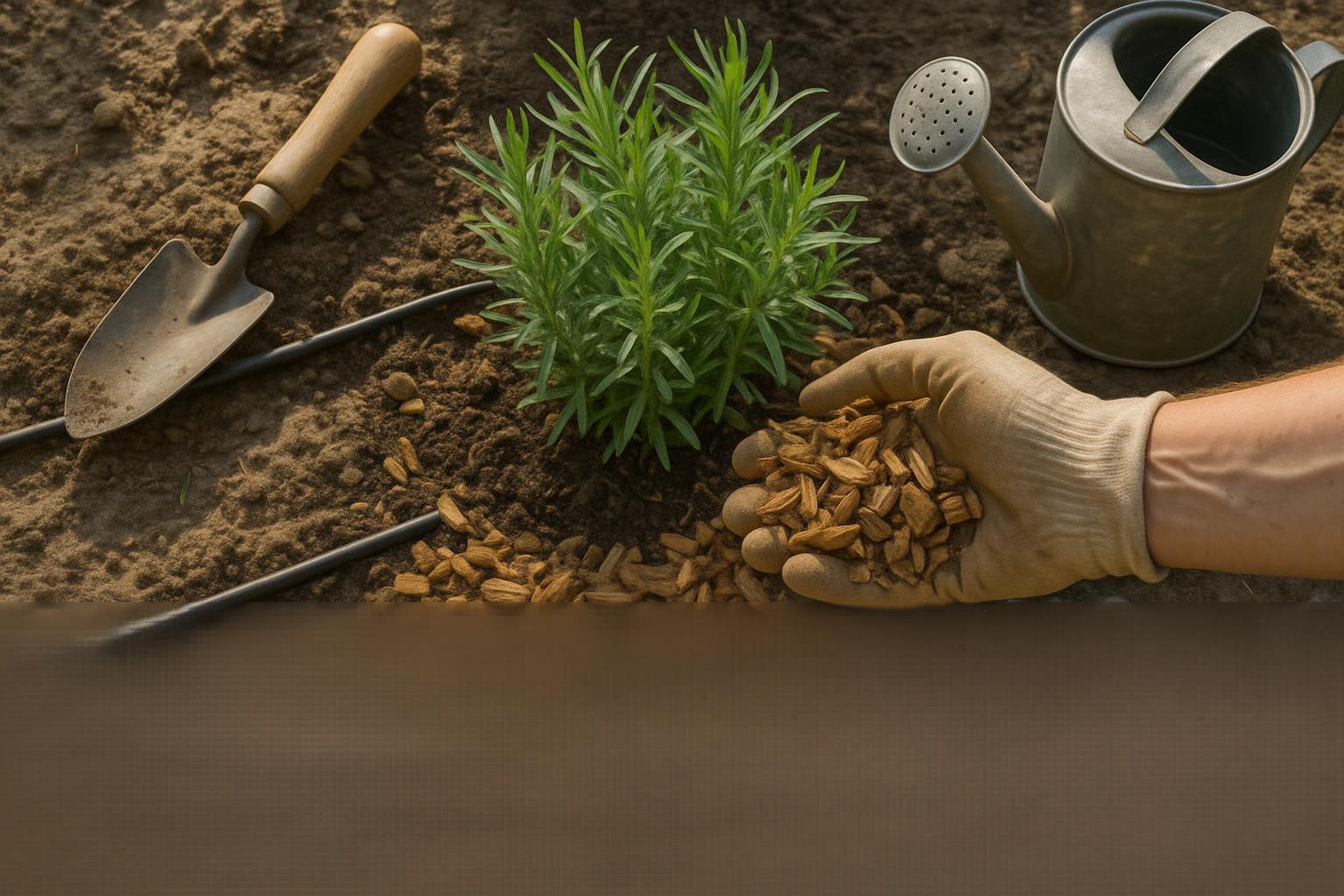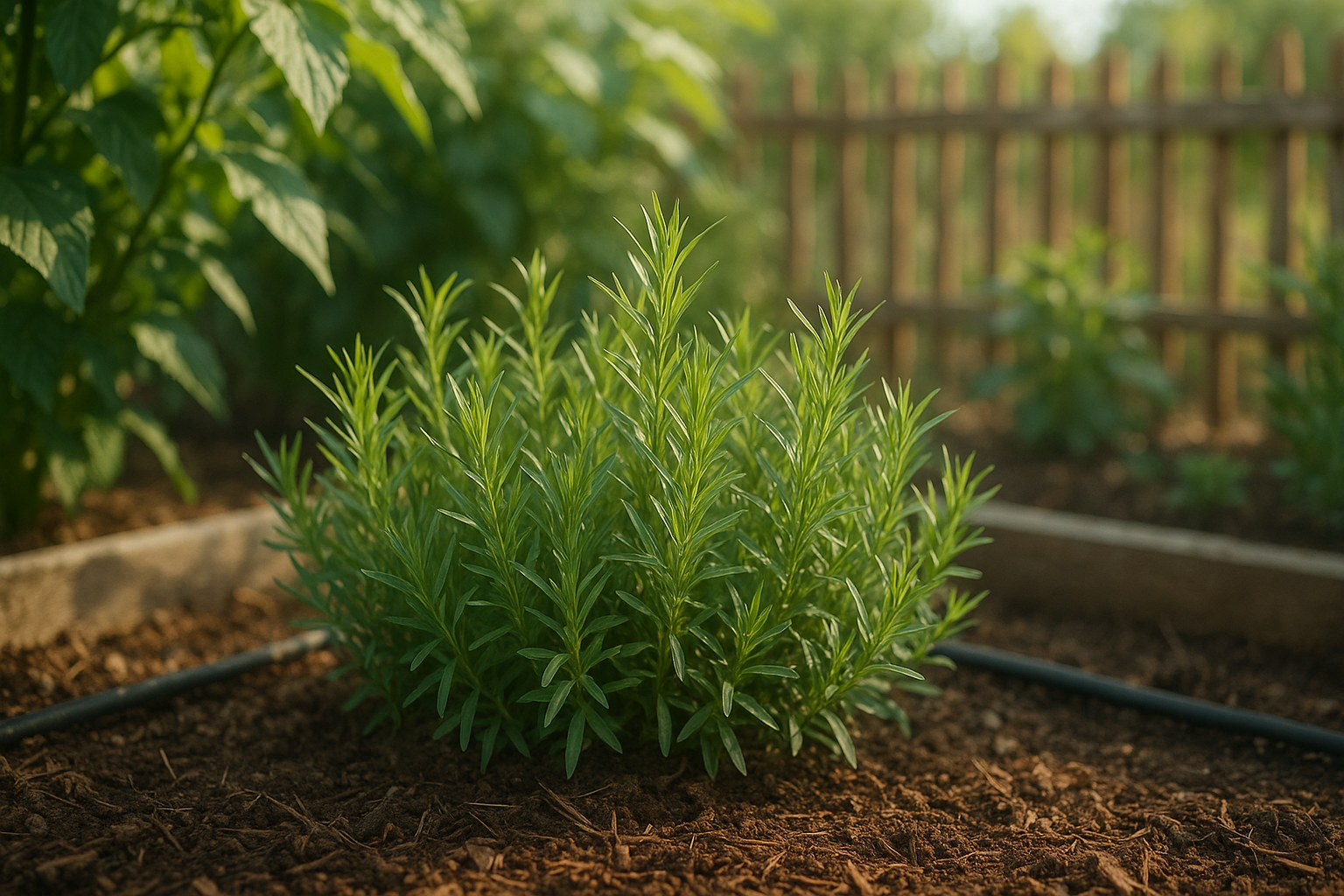Introduction
Tarragon in hot climates can be a challenge for many gardeners who love this herb’s subtle anise flavor in their cooking. Known for elevating dishes like chicken, eggs, and sauces, tarragon is a kitchen staple—but growing it successfully isn’t always easy, especially if you live in a place with blazing summers or dry spells.
The delicate leaves of tarragon can quickly wilt or lose flavor when exposed to too much sun and not enough moisture, making it tricky for cooks in regions like the American Southwest or Mediterranean to keep their plants thriving. However, with the right techniques—like providing afternoon shade, mulching to retain moisture, and choosing the best tarragon variety—it’s absolutely possible to harvest lush, fragrant sprigs even in the toughest climates.
In this article, you’ll find real-world tips and solutions to help your tarragon flourish, even when the weather doesn’t seem to cooperate.
Understanding Tarragon Varieties & Their Climate Needs

When it comes to growing tarragon, understanding the differences between French, Russian, and Mexican varieties is key to success—especially if you’re gardening in a challenging climate.
French tarragon (Artemisia dracunculus ‘Sativa’) is prized for its classic, anise-like flavor and is a favorite in French cooking. It thrives best in mild, temperate climates with well-drained soil but struggles in extreme heat or very dry conditions, often dying back during harsh summers.
Russian tarragon (Artemisia dracunculoides), on the other hand, is much hardier and can withstand hotter, drier climates and poor soils. However, its flavor is more muted and sometimes described as grassy or bitter, making it less desirable for culinary use.
Mexican tarragon (Tagetes lucida), although botanically unrelated, offers a sweet anise flavor that’s even more intense than French tarragon. It excels in hot, dry areas where traditional tarragon won’t survive. Its bright yellow flowers add garden interest, and it’s commonly grown in the American Southwest as a substitute for French tarragon.
Choosing the right variety for your climate not only ensures healthy growth but also guarantees the best flavor for your kitchen. If you’re gardening in a hot or arid region, Mexican or Russian tarragon are your most reliable bets.
Ideal Growing Conditions for Tarragon in Hot/Dry Climates
Tarragon thrives best in mild temperatures between 60–70°F (15–21°C), preferring bright, indirect sunlight over the harsh, scorching rays common in hot, dry climates. While this hardy herb can tolerate full sun in cooler areas, too much heat and direct sunlight can cause its delicate leaves to wilt, lose flavor, or become bitter.
To help tarragon flourish in your garden, choose a spot that gets morning sun but enjoys afternoon shade—think east-facing walls or locations behind taller plants. Tarragon also prefers moderate humidity and well-draining soil, so avoid places where hot winds constantly dry out the soil and foliage.
You can create a more hospitable environment by:
- Using mulch to retain moisture in the soil
- Placing windbreaks like garden netting or low fences nearby
If you’re growing tarragon in containers, move them to shaded patios during very hot afternoons, and mist the plants lightly in the mornings to help mimic some humidity. Drip irrigation or soaker hoses work wonderfully, delivering steady moisture without wetting the leaves, which helps prevent both drought stress and diseases caused by excess moisture.
By being mindful of tarragon’s need for protection from intense sun, harsh wind, and dry air, you can successfully cultivate this flavorful herb even in the most challenging conditions.
Soil, Water, and Mulch Strategies for Drought Resistance

Choosing the right soil is essential for building drought resistance in your garden. Sandy loam soil, blended with organic matter like compost or well-rotted manure, offers the best of both worlds: it drains well to prevent soggy roots while retaining enough moisture to keep plants hydrated through dry spells. To further boost moisture retention, add amendments like coconut coir, worm castings, or a bit of clay—these improve the soil’s ability to hold water without sacrificing aeration.
When it comes to watering in arid environments, deep and infrequent is the golden rule. Water early in the morning or after sunset to minimize evaporation, and aim for slow, deep soaks that encourage roots to grow downward where soil moisture lingers longer. Drip irrigation systems or soaker hoses are efficient investments for targeting water directly at the plant base and reducing waste.
Mulching is another powerful tool against drought; a two- to four-inch layer of organic mulch—such as wood chips, shredded bark, or straw—not only insulates plant roots from extreme temperatures but also slows water evaporation from the soil. Mulch suppresses weeds that compete for precious water and continually breaks down, further improving soil health over time.
Real-world tip: Leave a gap around the base of stems when mulching to prevent rot and give plants room to breathe. These combined strategies—from thoughtful soil amendments to smart watering and mulching—can make a dramatic difference in keeping your garden lush and resilient, even when rain is scarce.
Growing Tarragon in Containers or Indoors
Growing tarragon in containers offers several key benefits, especially if you live in areas with intense heat or dry weather. Containers give you better control over soil moisture, microclimates, and sun exposure, unlike in-ground planting where herbs can struggle in overheated, parched soil. However, containers can dry out faster and may need more frequent watering during hot spells.
When choosing a container, opt for one that is at least 12 inches wide and deep so tarragon’s roots have plenty of space. Use a light, well-draining potting mix—blend standard potting soil with added perlite or coarse sand to keep roots healthy and avoid soggy conditions. Always ensure the pot has drainage holes.
If temperatures soar or drought persists, you can easily move potted tarragon indoors to a sunny windowsill, ideally one that receives about 6 hours of indirect sunlight. Before moving, check for pests and prune back any leggy growth to reduce transplant shock. Let your plant acclimate by first placing it in its indoor spot for a few hours each day over the course of a week.
Water as needed, but don’t let the pot sit in excess runoff. With this flexible approach, your tarragon will thrive year-round, giving you fresh flavor without worrying about the weather.
Dealing With Common Problems in Hot/Arid Climates
Gardeners in hot, arid climates often face challenges like wilting plants, leaf scorch, and increased pest activity. Intense sun and limited moisture can drain energy from herbs, causing them to droop or develop crispy brown edges.
To combat wilting and scorch, try mulching generously around your plants to lock in soil moisture and keep roots cool. Water deeply but less frequently to encourage deep root growth, and use early morning irrigation to minimize water loss through evaporation.
Heat-tolerant herbs, like true French tarragon, generally do well, but it’s easy to confuse them with “false tarragon” (Mexican tarragon or Tagetes lucida), which is actually better adapted to dry heat. Planting this lookalike can be a smart switch in tough climates where traditional tarragon struggles.
Pests like spider mites and aphids also thrive in dry conditions. Encourage predatory insects such as ladybugs and lacewings, and spray a gentle solution of neem oil or insecticidal soap if infestations persist. Always avoid harsh chemicals, as they can harm both plants and beneficial wildlife.
By selecting heat-adapted varieties, practicing smart watering, and embracing eco-friendly pest control, you can maintain a thriving herb garden even when temperatures soar.
Harvesting & Storing Tarragon Grown in Tough Conditions
When growing tarragon in challenging conditions, it’s crucial to know exactly when to harvest to get the best flavor and keep the plant healthy. Fresh tarragon is ready to pick when the stems are at least six inches tall and the leaves look vibrant, aromatic, and are free from discoloration or brittleness—signs that your plant has thrived despite the tough environment.
Use sharp, clean scissors to snip the stems in the morning, taking no more than a third of the plant at once to minimize stress and encourage regrowth.
For storage, rapid drying helps preserve the oil-rich flavor of tarragon grown in heat. Tie small bundles and hang them upside down in a cool, ventilated spot away from sunlight, or use a dehydrator set on low heat.
To freeze tarragon, rinse and chop the leaves, then place them in ice cube trays with a splash of water or olive oil. Both drying and freezing lock in the unique taste, ensuring your harvest stays flavorful long after picking.
Conclusion
Growing tarragon in hot or dry climates is easier when you provide afternoon shade, use mulch to retain moisture, and water deeply but infrequently. Every garden is unique, so be sure to adjust these tips to fit your location. Have questions or tips of your own? Share them in the comments below!
